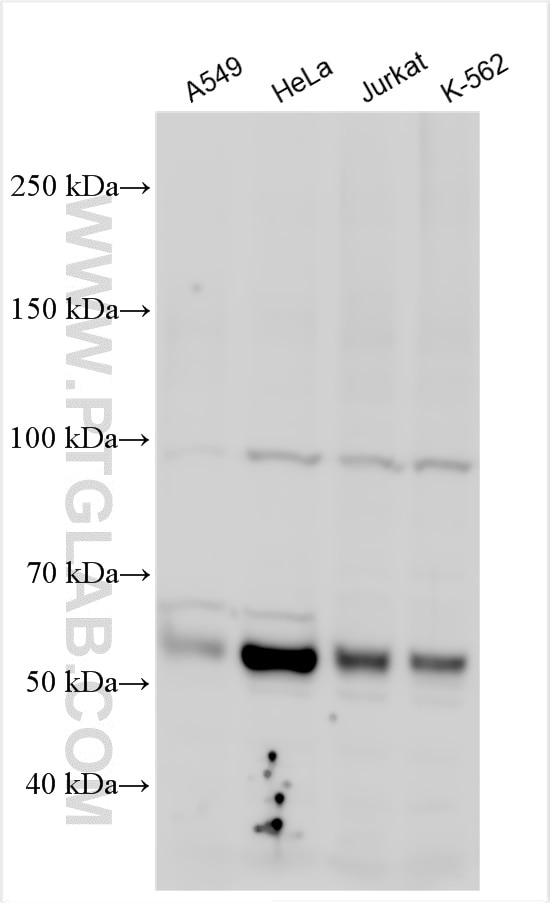Validation Data Gallery
Tested Applications
| Positive WB detected in | A549 cells, HeLa cells, Jurkat cells, K-562 cells |
Recommended dilution
| Application | Dilution |
|---|---|
| Western Blot (WB) | WB : 1:500-1:2000 |
| It is recommended that this reagent should be titrated in each testing system to obtain optimal results. | |
| Sample-dependent, Check data in validation data gallery. | |
Product Information
27437-1-AP targets NKAP in WB, ELISA applications and shows reactivity with human samples.
| Tested Reactivity | human |
| Host / Isotype | Rabbit / IgG |
| Class | Polyclonal |
| Type | Antibody |
| Immunogen | NKAP fusion protein Ag26637 相同性解析による交差性が予測される生物種 |
| Full Name | NFKB activating protein |
| Calculated molecular weight | 415 aa, 47 kDa |
| Observed molecular weight | 47-50 kDa |
| GenBank accession number | BC015354 |
| Gene Symbol | NKAP |
| Gene ID (NCBI) | 79576 |
| RRID | AB_3085959 |
| Conjugate | Unconjugated |
| Form | Liquid |
| Purification Method | Antigen affinity purification |
| UNIPROT ID | Q8N5F7 |
| Storage Buffer | PBS with 0.02% sodium azide and 50% glycerol , pH 7.3 |
| Storage Conditions | Store at -20°C. Stable for one year after shipment. Aliquoting is unnecessary for -20oC storage. |
Background Information
NKAP is a multifunctional nuclear protein that is involved in the activation of the ubiquitous transcription factor NF-kappaB. NKAP is associated with the the histone deacetylase HDAC3 and with the Notch corepressor complex, and it thereby acts as a transcriptional repressor of Notch target genes. It is also required for alphabeta T cell development. A related pseudogene has been identified on chromosome X, while a related and intronless retrocopy, which has an intact CDS and may be functional, is located on chromosome 6.
Protocols
| Product Specific Protocols | |
|---|---|
| WB protocol for NKAP antibody 27437-1-AP | Download protocol |
| Standard Protocols | |
|---|---|
| Click here to view our Standard Protocols |
